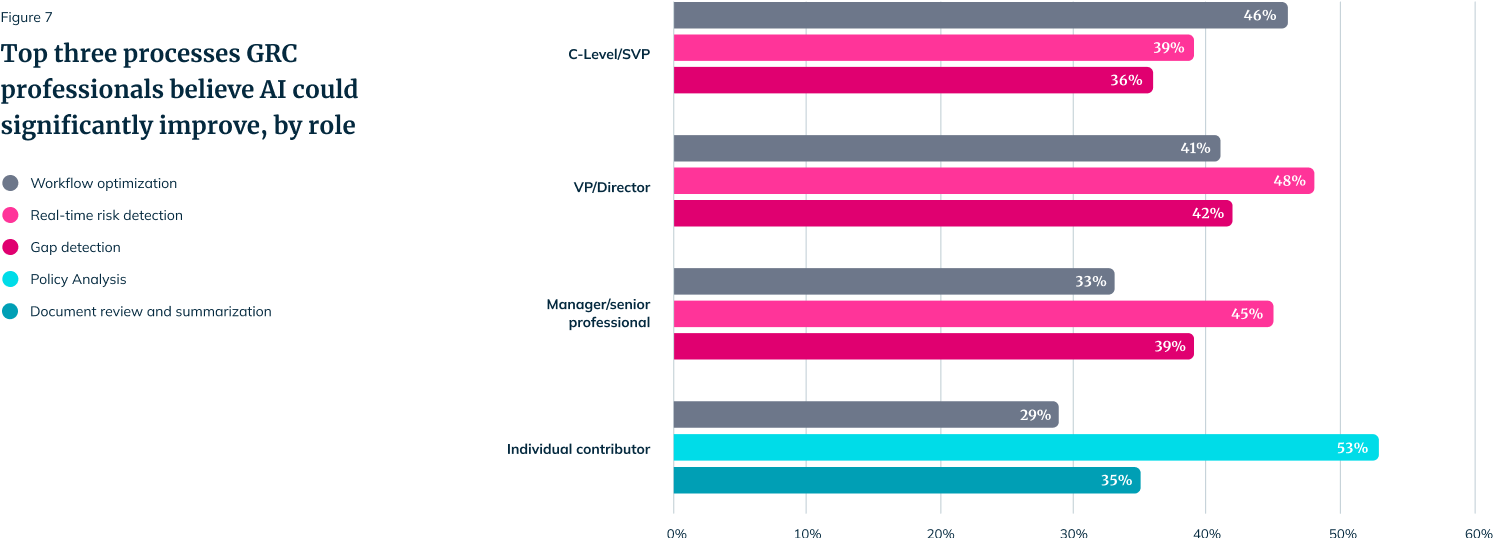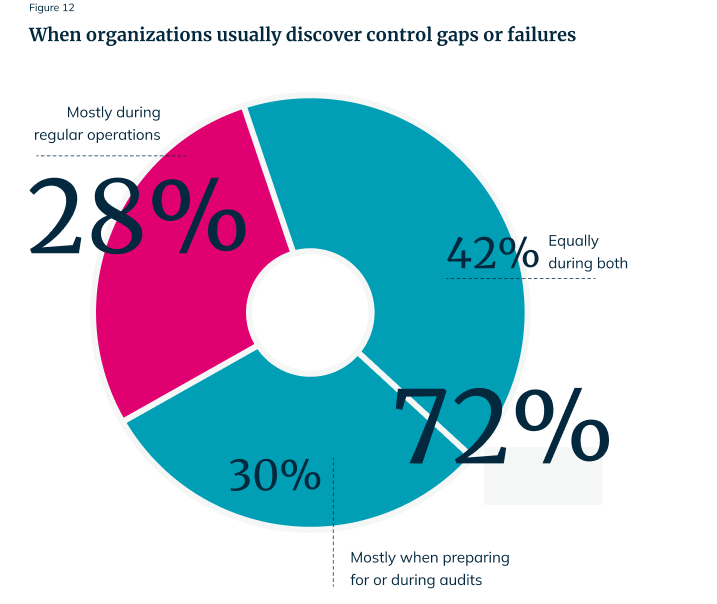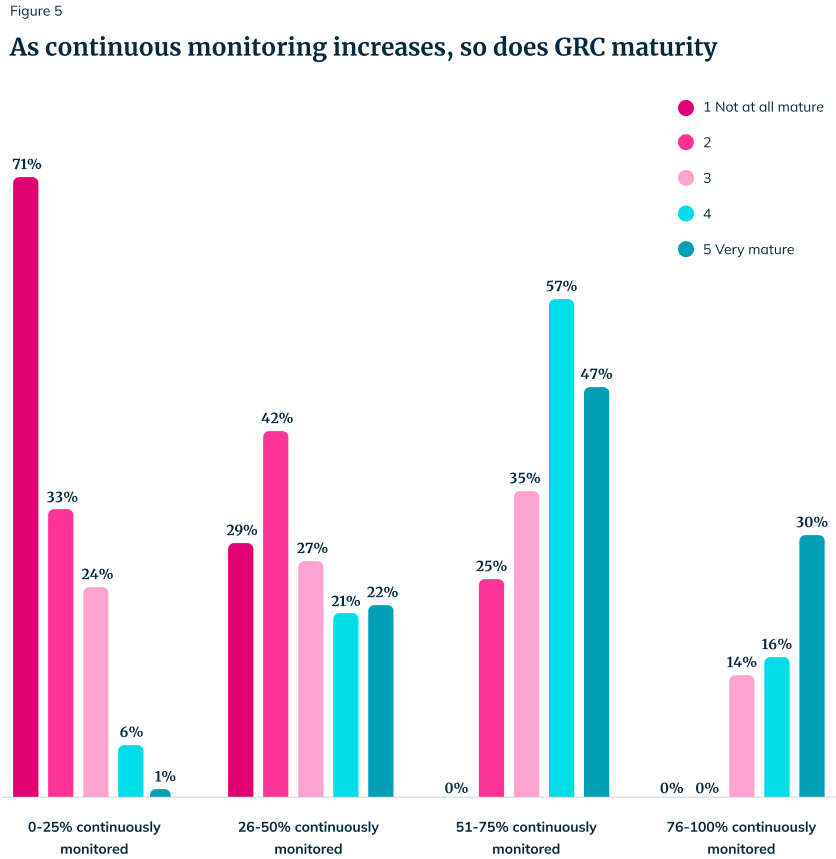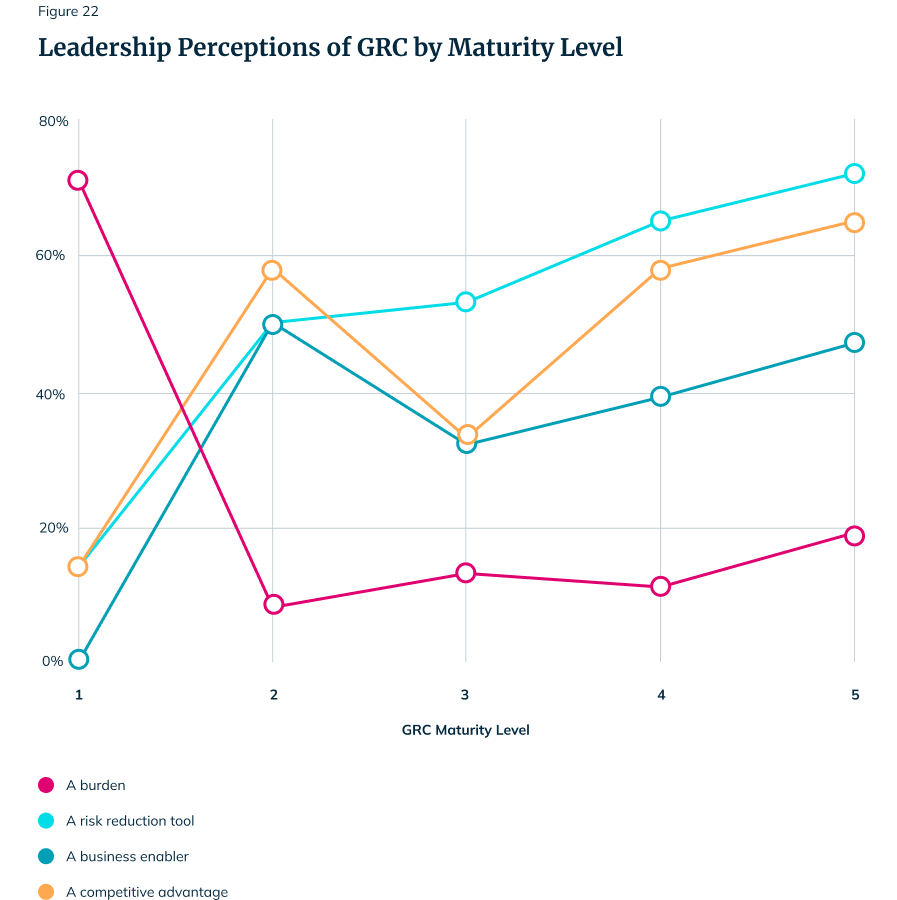What Makes a GRC Program Mature? Highlights from New Research
The pressure is on in GRC. With constantly increasing demands from customers and regulators, leadership expects your program to mature into a more strategic function. But what does GRC maturity mean in 2025?
We surveyed over 550 IT, InfoSec, and GRC professionals to find out. Their answers paint a clear picture: mature GRC programs focus on reducing risk. But that’s not all; they also use the right technologies, processes, and mindsets to drive strategic business outcomes.
The State of Enterprise GRC Maturity report distills this research into five key takeaways. These findings detail the state of GRC maturity in 2025, from hallmarks of highly mature GRC programs to hard truths that even the most experienced teams grapple with.
#1: Mature GRC Programs Are Highly Automated and AI-assisted
The most mature organizations prove that AI is the future of GRC. 100% of fully mature programs use automation, with the vast majority automating workflows including control monitoring, risk management, and evidence collection. Most of these teams (68%) already use AI, and 8% plan to implement AI soon.
While all GRC professionals (100%) agree that AI is helpful for workflow optimization, different roles reported different priorities. Individual contributors (ICs) value AI for reducing manual workloads, especially by summarizing documents and helping analyze policies. Management, on the other hand, focuses on more strategic benefits such as real-time risk detection and reporting automation.

The most mature programs bridge this divide, deploying AI to reduce practitioners’ workloads and deliver higher-level insights that drive business growth. Download the report to learn more about AI and automation in the most mature GRC programs.
#2: There’s a Disconnect on Risk Visibility
While survey respondents chose real-time risk visibility as the #1 indicator of GRC maturity, the majority of organizations (72%) still discover most of their control gaps during audits or audit prep.

But when issues show up days before an audit deadline, there’s no time for root-cause analysis or structural fixes. The respondents with the most mature GRC programs achieve the highest rates of continuous monitoring. With continuous control monitoring, a GRC team can detect gaps or failures and mitigate risks as they happen instead of waiting to uncover them at audit time.
Achieving real-time visibility takes automation, but more than that, it requires a mindset shift from audit-focused to continuously monitored. Download the report to learn more.
{{ banner-image }}
#3: Even Mature GRC Teams Have SOC 2 Misconceptions
Many teams, even at the highest levels of GRC, confuse a SOC 2 audit report with strong security practices.
In our research, 71% of fully mature programs had a positive impression of “SOC-in-a-Box” solutions. Smaller and less GRC-mature organizations — the target audience for fast and cheap SOC 2 packages — are most skeptical of these offerings. They’re right to be. An audit is just a point-in-time snapshot of risk and security practices, and SOC-in-a-Box audits aren’t always very rigorous.
Unfortunately, respondents who believe in SOC 2 bundles are far less likely to discover control gaps during day-to-day operations. Instead, they uncover failures during audit prep when it can be too late to course-correct without extreme measures. An audit-focused approach could be to blame.
Trusting a SOC 2 report without verifying its value opens the door to risk. What’s a better sign of GRC maturity? Continuously monitored controls, which support real-time gap detection. Download the report for details.

#4: Reporting Can Make or Break Leadership’s Perception of GRC
In organizations with the least mature GRC programs (maturity level 1), 57% don’t measure ROI or know how to. And it shows up in the way leaders respond. These same teams report the lowest levels of executive support and the tightest budgets. Leaders here also overwhelmingly perceive GRC as a burden (71%). After all, if your GRC program isn’t tracking return on investment (ROI), you can’t blame leaders for thinking it doesn’t deliver any.
When immature GRC programs do report, they share narrow metrics like “audit efficiency.” In contrast, mature GRC programs answer questions like, “What opportunities has GRC opened up?” “How does GRC improve the sales process?” or “What fines have we avoided thanks to GRC?”

High-maturity GRC programs approach reporting more strategically, and leadership responds positively. Download the report to find out which 5 GRC metrics engage leadership best.
#5: Custom Frameworks are GRC’s Unsung Heroes
Most GRC professionals say they want customization. In fact, 60% ranked it as a top-three must-have feature for a GRC platform. But there’s a gap between what teams want and what they do. Fewer than half have adopted custom frameworks.
Managing each regulation separately duplicates efforts at every level: mapping controls, gathering evidence, and coordinating with stakeholders. According to our data, leadership is far more likely to view GRC as a burden when the GRC team works this way.
The more experienced a GRC practitioner is, the more likely they are to be using custom frameworks, and the less likely their leaders are to see GRC as a burden. Download the report to learn more.

GRC Maturity is a Moving Target, but the Direction is Clear
Maturity doesn’t mean doing more. It means doing more of what matters. As GRC shifts from a back-office role to a core strategic function, the most effective GRC programs will be the ones that treat continuous monitoring and business alignment not as outcomes but as inputs for competitive advantage.
Want the complete picture of the state of GRC maturity in 2025?
The highlights above are just a taste of what we discovered. Download the complete report to dive deep into all five findings, see the data behind each takeaway, and take away actionable steps to advance your GRC maturity.
You’ll learn:
- Which GRC processes mature teams are optimizing with AI
- Why continuous monitoring makes GRC professionals so confident that they’d testify in Congress
- How to shift your mindset to catch more control gaps and errors day-to-day
- The 5 must-have GRC metrics you should include in reports
- How to reduce compliance burdens and streamline audits
And so much more. Get your copy of the report.


.png)
.png)




















